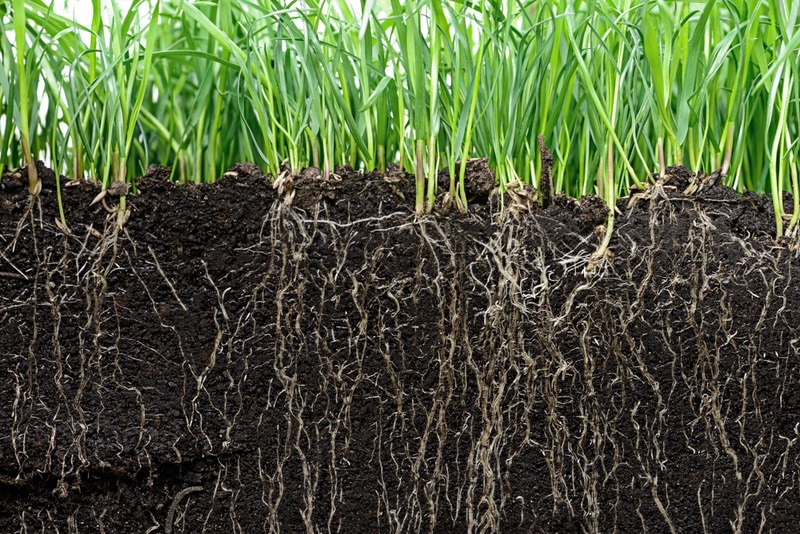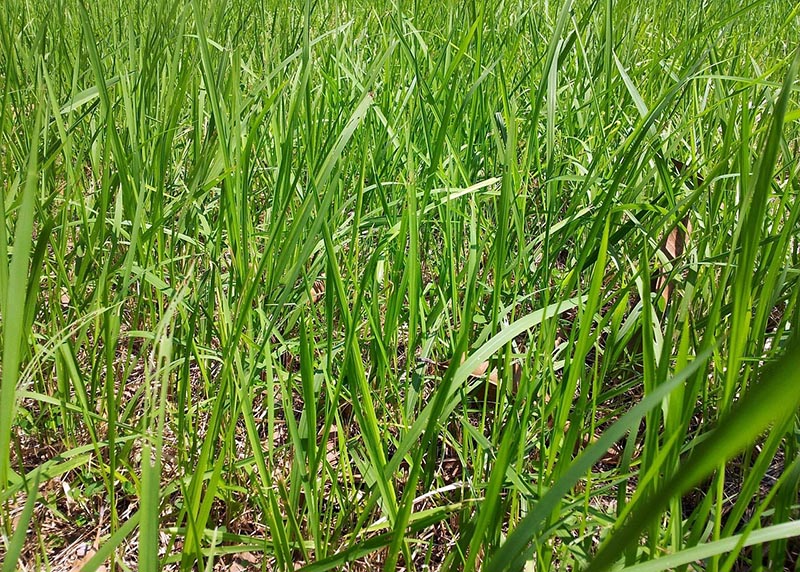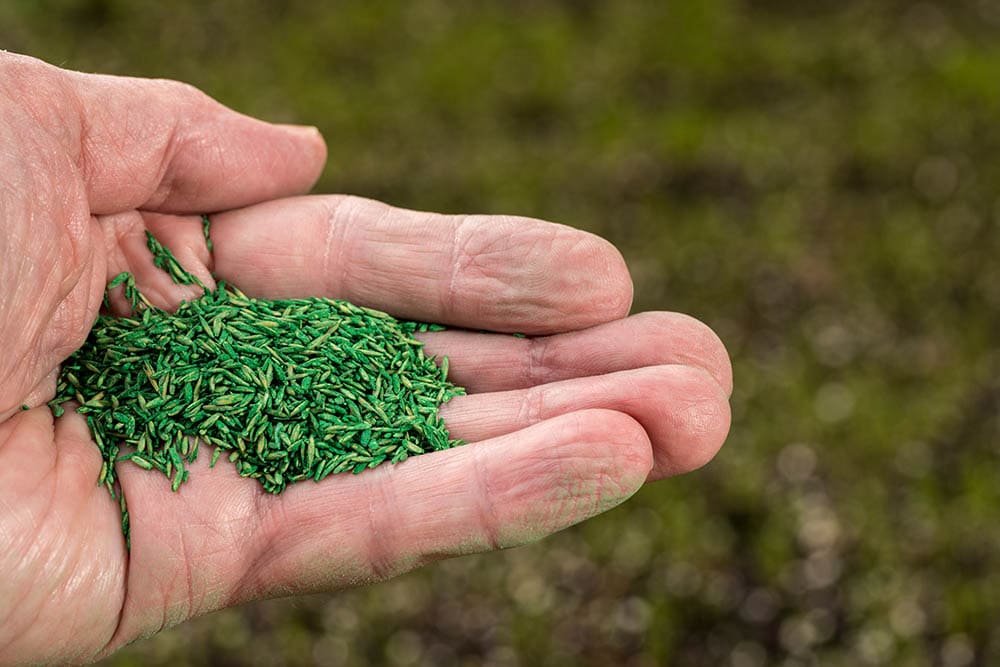How Deep Do Grass Roots Grow? The Interesting Answer!
-
Pete Ortiz
- Last updated:

No grass can survive without its root; that’s the obvious part. And the stronger the root system, the healthier and more stress-resistant the lawn will be. But how deep does the average grass root go into the ground? Well, this greatly depends on the soil, your maintenance habits, and, of course, the grass type. For the most part, grass roots are 6–36 inches long.
But they can reach up to 96 inches (8 feet). So, which grass types have the deepest and strongest root system? How do you take proper care of the roots and stimulate growth? How do you measure them? What’s the best way to mow the lawn? If you’re tired of dealing with shallow roots, this guide is for you!
Grass Roots: Why Are They Important?
Have you ever wondered where the grass that makes up our lawns gets its nutrients? It relies on the soil to provide it with all the necessary minerals, vitamins, and moisture. Now, it’s the roots that absorb these “goods” from the soil and conduct them to the stem of the grass. Oxygen is also transported through the roots.
So, if the root system is damaged or not deep enough, that leads to a shorter lifespan, brownish color, and a thin lawn. But when the root system is strong, it helps the grass (or any plant, shrub, or tree) survive harsh environments. Here’s a closer look at the biggest pros of a capable root system:
- Steady nutrient delivery: When we add a potting mix, fertilizer, or water to the lawn, the nutrients go deep into the soil. And it’s up to the roots to soak in the nutritious substances and grow tall, healthy grass. Here’s the important part: shallow roots can’t reach the subsoil. Instead, they “gobble” whatever minerals or vitamins they find 2–3 inches below the surface. That’s why deep roots matter.
- Make way for new roots: No matter how potent the roots are, they will wither and die eventually. That said, the stronger they are, the easier it will be for the new cluster of roots to grow; they’ll feed on the old roots and become even stronger. Deep roots are known to break through compacted soil, too, paving a path for water and nourishment.
- Easily handle a tough climate: Even if you live somewhere in Florida or California, the weather won’t always be on your side. Droughts, heavy rain, and temperature fluctuations can be stressful for the lawn. Thankfully, a deep root system will be able to reach water/nutrients that hide deep in the soil and survive cold temps.
So, How Deep Do They Actually Go?

Like any other type of vegetation, grasses come in many shapes and sizes. The same is true for their roots. Now, if we’re speaking about the average depth of the root system, it usually ranges from six to 24 inches or 0.5 to 2 feet. For most parts of the US, that’s enough to withstand severe weather and reach the nutrients from the depth of the soil.
However, 24 inches isn’t the maximum length for grassroots—not even close. Many mature lawn roots go 3–4 inches deep. And then we have certain species with roots that grow as deep as 8 feet (when properly maintained by the lawn owner), which equals 96 inches.
Which Grasses Have the Deepest Root Systems?
- Cold season: Tall fescue is among the best cold-season lawn grasses. The roots often go 2–3 feet into the ground (24–36 inches). This grass type is very popular in the states that are prone to droughts and extreme heat. The roots of the Fairway crested wheatgrass are just as strong and go 24–30 inches into the soil. For maximum depth, plant the Kentucky bluegrass: it goes eight inches deep.
- Warm season: For warmer climates, the Bermuda grass is the undisputed champ. The roots grow eight feet tall (only 20% of the root system goes that deep). And if you’re looking for an alternative, go with the native Buffalo grass or Bahia. Their roots sit 7–8 feet deep but grow shorter when mowed. Zoysia grass works the same way: the root system travels 5 feet deep but cuts back to 1.5 feet when mowed.
- Lastly, if ornamental grasses are your cup of tea, the native switchgrass will be an obvious pick. Its roots can push 10 feet into the soil (but mostly stop at six feet). Next, the Big Bluestem boasts a root system that reaches 9–10 feet in length. The Indian grass, in turn, grows 3–7 feet up and 9 feet below the surface.
How Do You Grow Deep Grass Roots?

Mow the grass frequently and remember to water, fertilize, and aerate the lawn—that’s all there is to it. When mowing, keep the blades at the right distance. If you cut more than a third of the turf, that will lead to a disaster. But, with the right settings on the cutter (1–4 inches), you’ll make the roots grow deeper and become stronger. Overwatering is another common mistake that many gardeners/lawn owners make.
When there’s too much water on the surface, the roots don’t go deep into the soil. In early summer and late fall, watering the grass 2–3 times a week is the way to go. During the hot days, do that 3–4 times a week, first thing in the morning. Fertilize the lawn in late fall to help the grass make it through winter. Finally, aerate the soil in spring to break it up and open a “passage” for nutrients, water, and oxygen.
Killing Grass Roots: A Quick Guide
Got some weeds in the backyard ruining the view? You can deal with that problem without using any chemicals. Solarization is arguably the best technique. It’s when you use the heat generated by the sun to fry the roots. First, cut the grass to make it shorter; next, cover it with plastic/glass and use something heavy to keep it in place. On average, it takes 2–4 weeks to effectively kill the roots this way.
Boiling water can also work, but it’s only effective in small areas. Besides, the water might not be able to “cook” the roots completely. So, repeat the process a couple of times. Horticultural vinegar (20% acidic) is a much stronger remedy. Just spray it over the grass and repeat in a week or so. Sheet composting is another option. Mow the area, cover it with newspaper, water it, and put a layer of compost/mulch on top.
Can You Measure the Roots Manually?

Alright, now that we covered the average depth, let’s learn how to measure the roots. Grab a spade and carefully dig out a small section of the soil. Make sure you dig deep enough to reach the bottom of the roots. For most lawn grass types, 8–10 inches will do. Next, use a measuring tape to check how deep the roots go.
A quick note: not all roots are of the same length. Some go deeper, while the rest are a bit shorter. So, what you should do is record the length of 70–80% of the roots to make an accurate measurement. If the roots only go 2–3 inches into the ground, that means you’ve got shallow roots. Thin turf, dry roots, and brown/black color are more common signs of thin, shallow roots.
What Do Healthy Roots Look Like?
In contrast to popular belief, the roots aren’t green. Instead, if you grab a shovel and dig into the soil, you’ll see that the roots are usually white or light tan. That’s because they’re not affected by photosynthesis. Colorless and transparent roots are also fairly common. In any case, they should be nice and thick, not soft. Roots are dense, too, and look like the branches of a tree or the bronchiole of a human’s lungs.
The roots shouldn’t be slimy or have an odor. Next, if they are black, brown, or gray, that means they’re in bad shape. Strange smells (like rot, decay, or sulfur) and irregular shapes are also common signs of an unhealthy root system. The best way to deal with soft and smelly roots is to cut them and make room for new ones.
Are Grass Roots Toxic to Humans?
For the most part, no, roots aren’t dangerous. However, there are a few exceptions to this rule. For example, the fleshy roots of the Monkshood flowering plant are known to upset the digestive system. Sometimes, they also cause nervous excitement. The roots of the Bleeding Heart, in turn, will only be dangerous when consumed in large amounts.
It’s proven to be fatal to cattle, though. You should also stay away from the Elderberry roots. Same as with the Monkshood, an upset stomach is the biggest side effect, along with nausea. The Jack-in-the-Pulpit is even more dangerous. Its roots make the tongue and the mouth burn. Finally, the toxic roots of certain wild mandrake species are known to cause diarrhea.
Conclusion
While you might not give this much thought, the roots keep every single flower, vegetable, fruit, and, of course, grass alive and kicking. Without a root system that operates like clockwork, you’ll have slow growth and yellow/brown grass on your hands. Understanding the role roots play in the well-being of the lawn is critical.
Essentially, the deeper they go, the healthier the grass will be. So, how do you make the roots stronger? Just follow our tips and tricks for proper maintenance, and you’ll start seeing improvements soon! Want to get rid of annoying grassroots instead? We covered that as well! All you’ll need is a piece of newspaper or plastic!
- Related Read: Does Vinegar Kill Grass Roots? What You Need to Know
Featured Image Credit: ER_09, Shutterstock
Contents



